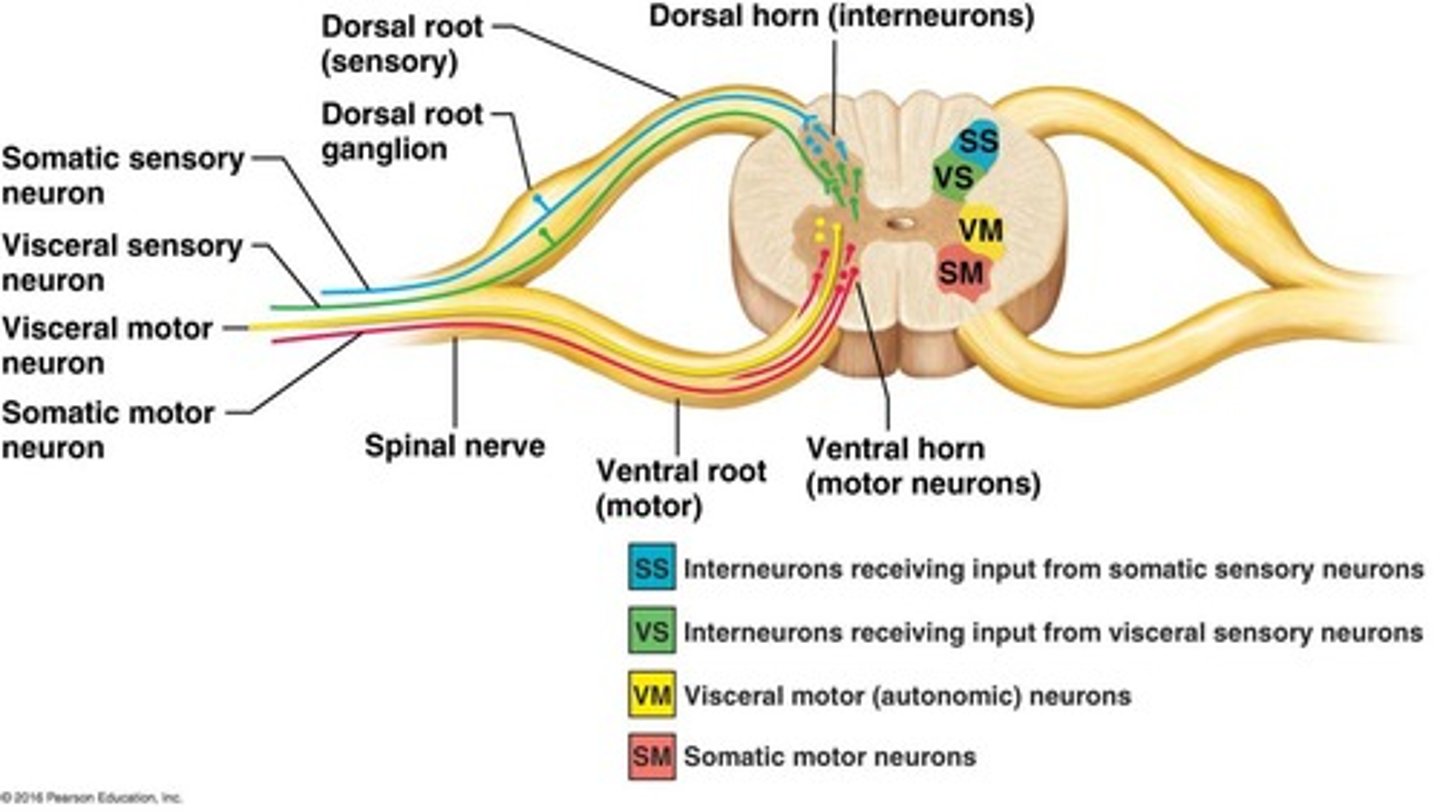Central Nervous System Overview and Pathophysiology
1/11
There's no tags or description
Looks like no tags are added yet.
Name | Mastery | Learn | Test | Matching | Spaced |
|---|
No study sessions yet.
12 Terms
What are the two main components of the Central Nervous System (CNS)?
The brain and spinal cord.
What is the location of the spinal cord in relation to the vertebrae?
The spinal cord extends from the base of the skull to the L1-L2 vertebrae.
How many pairs of spinal nerves are there?
31 pairs of spinal nerves.
What structures hold the spinal cord in place?
Denticulate ligaments, which connect the pia mater to the dura mater.
What is the composition of grey and white matter in the spinal cord?
Grey matter is located inside and contains multipolar neurons; white matter is on the outside.

What does the dorsal root of the spinal cord carry?
Afferent (sensory) information.

What does the ventral root of the spinal cord carry?
Efferent (motor) information.
What are the three orders of neurons in spinal tracts?
First order (cell bodies in dorsal root), second order (cell bodies in dorsal horn or medulla), third order (cell bodies in thalamus).
What is the function of decussation in the nervous system?
It refers to the crossing over of nerve fibers, which contributes to symmetry in the nervous system.
Name two types of pathways in the spinal cord and their directionality.
Ascending pathways (e.g., spinocerebellar) and descending pathways (e.g., corticospinal).

List two diseases associated with pathophysiology of the CNS.
Alzheimer's Disease and Parkinson's Disease.
What is the significance of the aging brain in relation to the CNS?
It may be associated with various neurodegenerative conditions and changes in cognitive function.